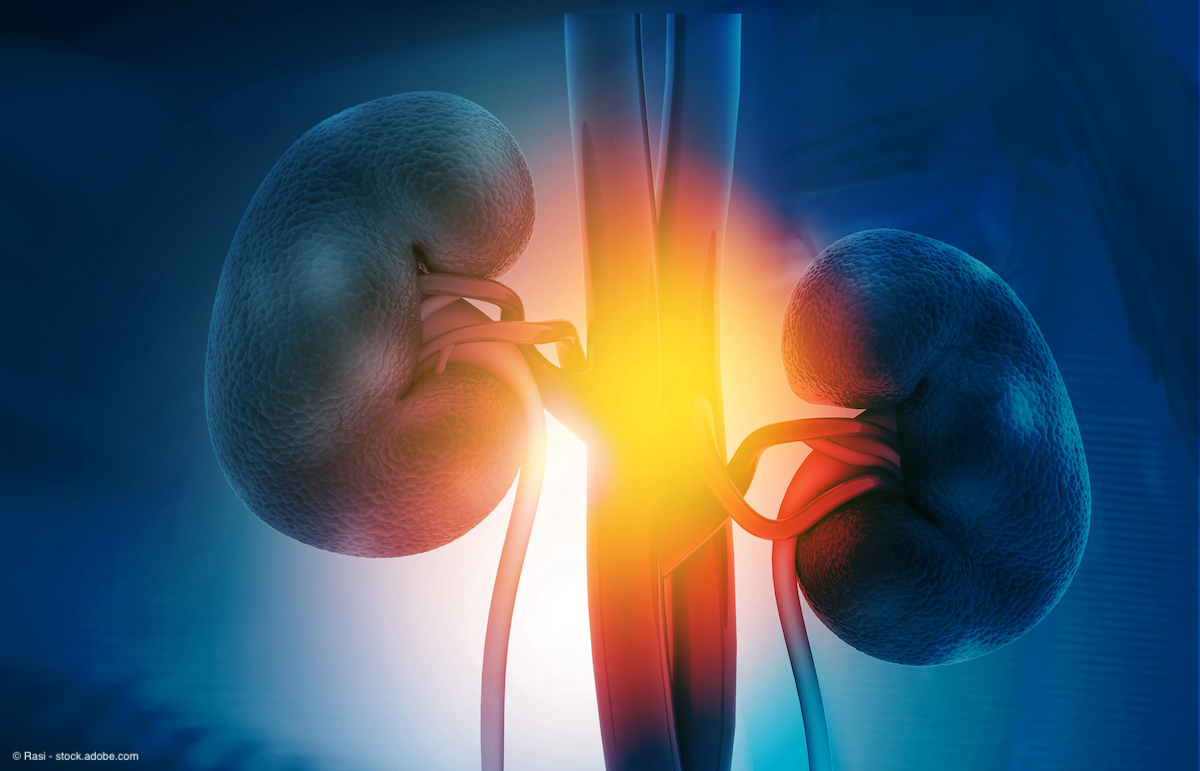Article
Study shows potential for TKI treatment breaks in patients with renal cell carcinoma
Author(s):
The median overall survival in renal cell carcinoma patients was similar, regardless of whether or not patients received a break from treatment.
Patients receiving tyrosine kinase inhibitor (TKI) treatment for renal cell carcinoma can likely take a treatment break without increasing their risk of mortality, according to data from the phase 2/3 STAR trial published in the Lancet Oncology.1
The median number of breaks was 1 and the maximum number of breaks was 9.

The findings showed that although non-inferiority could not be determined following planned treatment cessation vs conventional continuation with a first-line TKI, patients with advanced clear cell renal cell carcinoma did not experience a clinically meaningful decrease in survival outcomes.
The median overall survival (OS) was 28 months (95% CI, 24-32) in the conventional strategy group vs 27 months (95% CI, 23-31) for the drug-free interval group in the per protocol population. For the intent-to-treat (ITT) population, the median OS was 28 months (95% CI, 24-32) in the conventional continuation group vs 27 months (95% CI, 23-33) in the drug-free interval group.
Investigators also noted that there was noninferiority with regard to quality-adjusted life years (QALYs) in the ITT group (marginal effect difference 0.06; 95% CI, –0.11 to 0.23) and the per-protocol population (marginal effect difference 0.04; 95% CI, –0.14 to 0.21).
A total of 920 patients were randomly assigned to either the conventional continuation group (n = 461) or the drug-free interval group (n = 459). The median follow-up for both groups was 58 months. Patients received 50 mg of oral sunitinib (Sutent) a day or 800 mg of oral pazopanib (Votrient) a day.
The ITT population included 919 patients and the per-protocol group included 871. Overall, 73% of patients were male and 96% were White.
Treatment discontinuation was necessary in 47% of patients before beginning randomization at week 24. Reasons for discontinuation included radiological disease progression (58% vs 54%), and toxicity (31% vs 32%) in the continuation and drug-free groups, respectively.
Patients received a median of 4 treatment cycles; before week 24, the median number of treatment cycles was identical between the 2 groups. A dose reduction was necessary in 45% of patients in the conventional group vs 46% in the drug-free interval group.
A total of 54% of patients in the drug-free interval group continued the trial past 24 weeks, of whom 85% started their first treatment break via protocol at week 24. Among the remaining patients (n = 38), 15 did not take a break and continued treatment at week 24 due to error, then withdrew from treatment or had radiological progression.
Additionally, 12 patients took their first break at week 36, 6 patients at week 48, 2 patients at week 60, and 3 at other time points. In the conventional continuation group, 52% continued treatment after week 24.
The median number of breaks was 1 and the maximum number of breaks was 9. The median length of all treatment breaks was 87 days. Three percent of patients in the drug-free interval group withdrew to receive continuous treatment.
A total of 74% of patients in the per-protocol group died.
Investigators also reported a hazard ratio of 0.75 (95% CI, 0.66-0.86; P <.0001) for time to strategy failure, 0.77 (95% CI, 0.67-0.89; P = .00037) for summative progression-free interval, 0.75 (95% CI, 0.65-0.86; P <.0001) for time to treatment failure, and 1.37 (95% CI, 1.19-1.57; P <.0001) for progression-free survival.
The most common grade 3 or higher adverse effects (AEs) included hypertension (26% vs 29%), hepatotoxicity (11% vs 11%), and fatigue (8% vs 15%) in the conventional continuation strategy group vs the drug-free interval group.
The most common serious AEs included gastrointestinal disorders (34% vs 16%); infections and infestations (8% vs 13%); and respiratory, thoracic, and mediastinal disorders (8% vs 9%) in the conventional continuation group vs the drug-free interval group, respectively.
Death due to serious AEs occurred in 12 patients and included 3 patients from the conventional continuation group and 9 from the drug-free group. Causes of death included vascular (n = 3), cardiac (n = 3), hepatobiliary (n = 3), gastrointestinal (n = 1), or nervous system (n = 1) disorders, and from infections and infestations (n = 1).
A post-hoc analysis looked at a clinical response in patients who had not progressed at 24 weeks; investigators noted that the depth of response was similar between the conventional continuation and drug-free interval groups.
Initial treatment response was observed in 245 patients in the conventional continuation group with less than 1% having a complete response (CR), 26% having a partial response (PR), and 74% having stable disease. Among 250 patients in the drug-free interval group who responded to initial treatment, the CR rate was 1%, PR rate was 23%, and stable disease rate was 76%.
Reference
1. Brown JE, Royle KL, Gregory W, et al. Temporary treatment cessation versus continuation of first-line tyrosine kinase inhibitor in patients with advanced clear cell renal cell carcinoma (STAR): an open-label, non-inferiority, randomised, controlled, phase 2/3 trial. Lancet Oncol. 2023;24(3):123-227. doi:10.1016/S1470-2045(22)00793-8
Newsletter
Stay current with the latest urology news and practice-changing insights — sign up now for the essential updates every urologist needs.
















